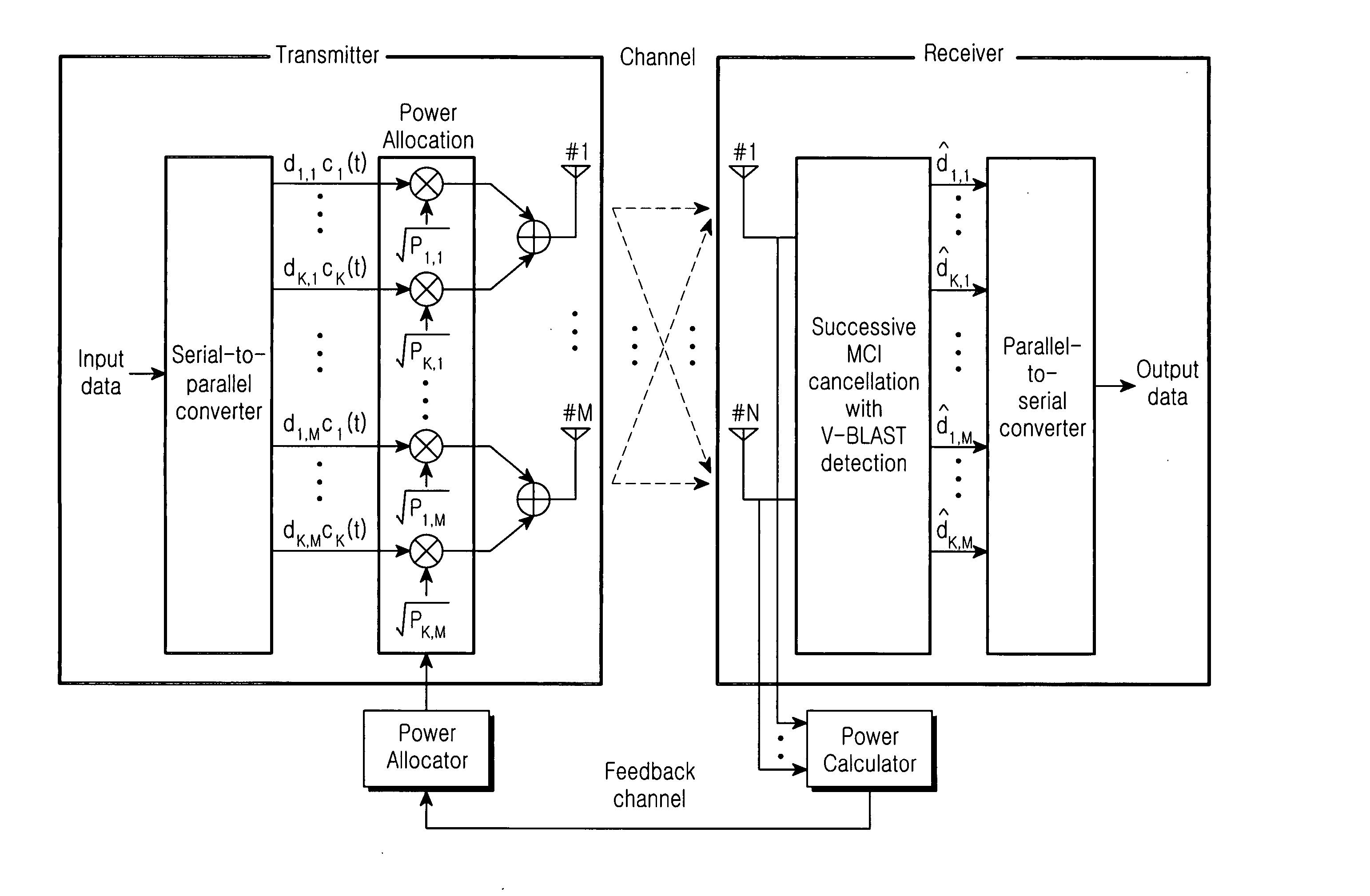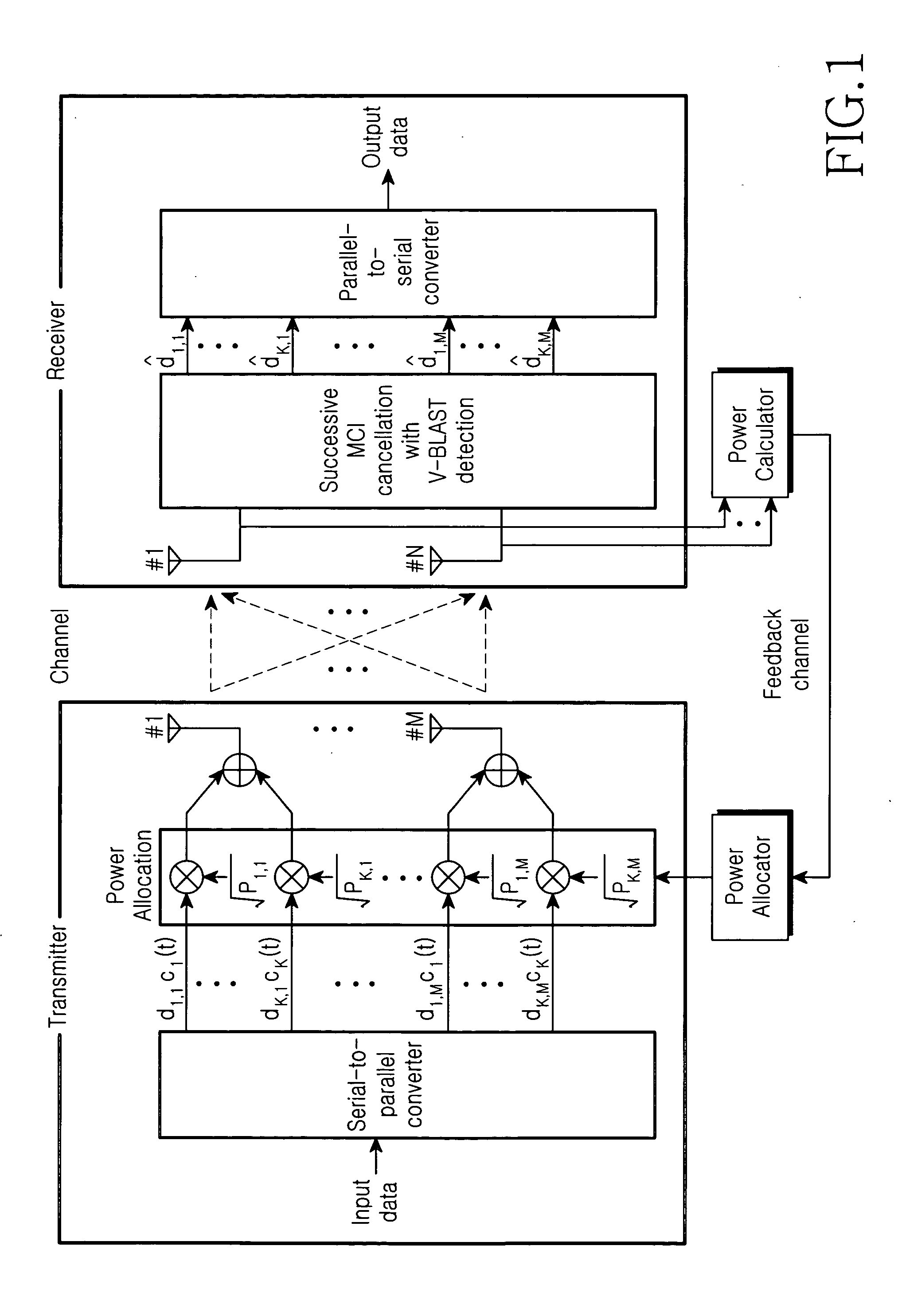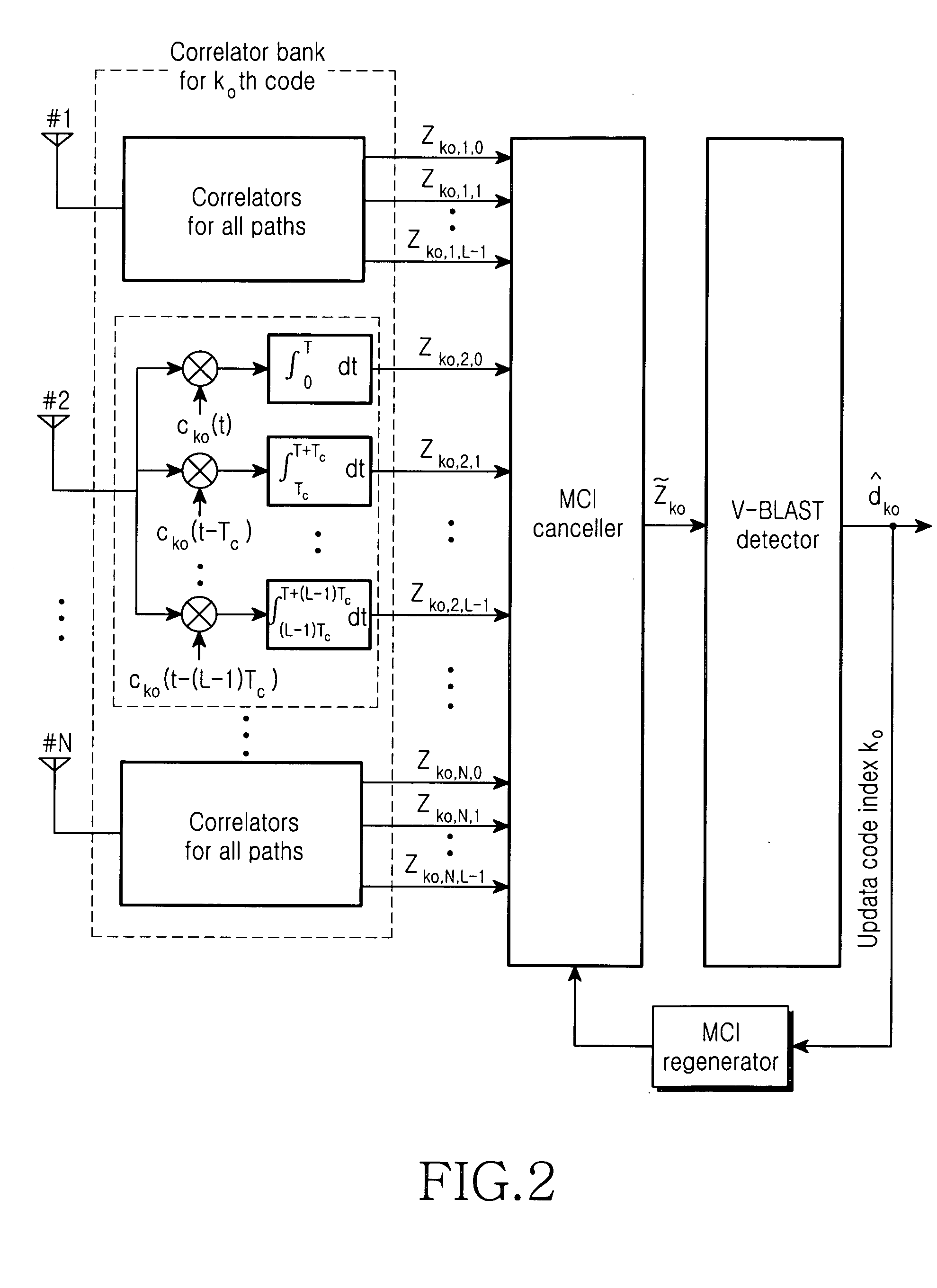Wireless communication apparatus and method for multiple transmit and receive antenna system using multiple codes
a communication apparatus and multiple code technology, applied in pulse manipulation, pulse technique, instruments, etc., can solve the problems of inability to detect the signal, the duration is very short, and the interference between codes is inevitable, and achieve the effect of high data rate and effective method of performance improvemen
- Summary
- Abstract
- Description
- Claims
- Application Information
AI Technical Summary
Benefits of technology
Problems solved by technology
Method used
Image
Examples
Embodiment Construction
[0024] Hereinafter, preferred embodiments of the present invention will be described in detail with reference to the accompanying drawings. Note that the same or similar components in drawings are designated by the same reference numerals as far as possible although they are shown in different drawings. In the following description of the present invention, a detailed description of known functions and configurations incorporated herein will be omitted when it may make the subject matter of the present invention unclear.
A. Overview
[0025] An effective detection algorithm for a multi-code V-BLAST system and a transmit power allocation method for the detection algorithm under a frequency-selective fading channel environment will now be described in detail. In particular, the detection algorithm suggested according to the present invention employs a method for successively canceling a Multi-Code Interference (MCI). Accordingly, a Successive Interference Cancellation (SIC) is employed...
PUM
 Login to View More
Login to View More Abstract
Description
Claims
Application Information
 Login to View More
Login to View More - R&D
- Intellectual Property
- Life Sciences
- Materials
- Tech Scout
- Unparalleled Data Quality
- Higher Quality Content
- 60% Fewer Hallucinations
Browse by: Latest US Patents, China's latest patents, Technical Efficacy Thesaurus, Application Domain, Technology Topic, Popular Technical Reports.
© 2025 PatSnap. All rights reserved.Legal|Privacy policy|Modern Slavery Act Transparency Statement|Sitemap|About US| Contact US: help@patsnap.com



